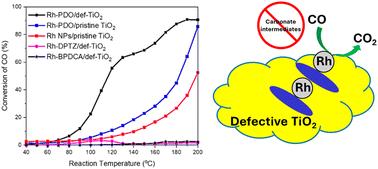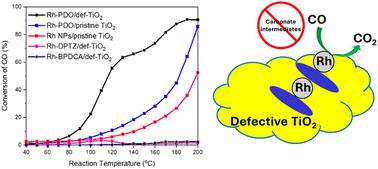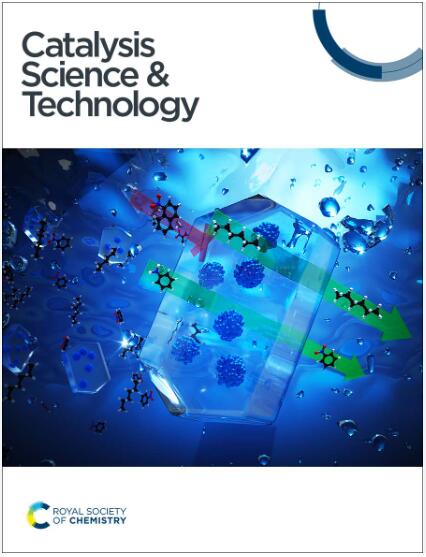配体配位单位点 Rh 催化剂的 CO 氧化作用:活性配合物的鉴定
IF 4.4
3区 化学
Q2 CHEMISTRY, PHYSICAL
引用次数: 0
摘要
在异相催化反应中,单原子催化已发展成为提高原子利用效率、降低反应温度和控制反应途径的一种有前途的策略。使用支撑型单原子催化剂的一个重要挑战是金属单原子在反应过程中的稳定性。在此,我们提出了一种通过金属配体配位策略在二氧化钛载体上稳定单个铑原子的方法。我们探讨了 CO 氧化的反应活性和机理,以及在氧化反应条件下的稳定性。动力学研究表明,当原料气体中氧气过量时,有缺陷的二氧化钛表面比原始的二氧化钛表面更容易活化氧气。原位漫反射红外傅立叶变换光谱(DRIFTS)分析表明,在原始二氧化钛表面上,1,10-菲罗啉-5,6-二酮(PDO)配位的 Rh 催化剂(Rh-PDO/TiO2)通过形成碳酸盐类物质催化 CO 氧化,这与 Rh 纳米颗粒催化剂上发生的情况类似。然而,在有缺陷的二氧化钛表面,Rh-PDO/def-TiO2 没有形成碳酸盐类物质。研究还表明,在这样的反应环境中,支撑的 Rh 配体催化剂在高温下非常稳定,有可能得到广泛应用。本文章由计算机程序翻译,如有差异,请以英文原文为准。


CO oxidation over a ligand coordinated single site Rh catalyst: identification of the active complex†
Single atom catalysis has evolved as a promising strategy to enhance atom utilization efficiency, lower reaction temperatures, and control reaction pathways in heterogeneous catalytic reactions. An important challenge using supported single atom catalysts is the stability of metal single atoms during reactions. Here, we present an approach to stabilize single rhodium atoms on a titania support via a metal–ligand coordination strategy. We explore the reaction activity and mechanism of CO oxidation, as well as the stability under oxidative reaction conditions. Kinetic studies suggest that, with an excess of oxygen in the feed gas, oxygen activation is more facile on defective titania surfaces than on pristine titania surfaces. In situ diffuse reflectance infrared Fourier transform spectroscopy (DRIFTS) analysis shows that on the pristine titania surface, the 1,10-phenanthroline-5,6-dione (PDO) coordinated Rh catalyst (Rh–PDO/TiO2) catalyzes CO oxidation via the formation of carbonate-like species, which is similar to what occurs on Rh nanoparticle catalysts. However, on the defective titania surface, no carbonate species form for Rh–PDO/def-TiO2. The supported Rh–ligand catalysts are also shown to be very stable in such a reaction environment at elevated temperatures, potentially allowing for wide applications.
求助全文
通过发布文献求助,成功后即可免费获取论文全文。
去求助
来源期刊

Catalysis Science & Technology
CHEMISTRY, PHYSICAL-
CiteScore
8.70
自引率
6.00%
发文量
587
审稿时长
1.5 months
期刊介绍:
A multidisciplinary journal focusing on cutting edge research across all fundamental science and technological aspects of catalysis.
Editor-in-chief: Bert Weckhuysen
Impact factor: 5.0
Time to first decision (peer reviewed only): 31 days
 求助内容:
求助内容: 应助结果提醒方式:
应助结果提醒方式:


